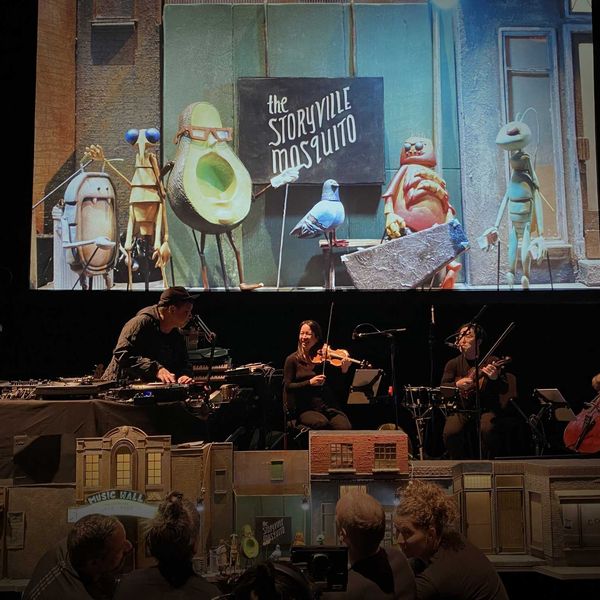The FYI News Bulletin
A Nordicity Toronto venues study, co-funded by the City and Ontario Creates with the Canadian Live Music Association, is to be released Oct.

By David Farrell
A Nordicity Toronto venues study, co-funded by the City and Ontario Creates with the Canadian Live Music Association, is to be released Oct. 8 at noon with a live stream press conference available on CLMA’s YouTube channel.
– Brock Silversides has retired after 35+ years as manager and audio-visual archivist with the University of Toronto Library’s Media Commons which boasts one of the largest collections of Canadian film, broadcasting, media and music industry materials anywhere. He has also authored 13 books/exhibition catalogues and over 60 articles and is currently writing a history of Toronto ‘60s soul band Mandala.
–Pollstar and VenuesNow magazines have released the contents from a joint study of 1350 live music industry professionals, entitled 2020 State of the Industry Survey. Among the findings:
Over half of all respondents, 54.7%, believe the industry will return to full capacity in 2021 compared to 30.6% who say the comeback won’t happen until 2022. When breaking down 2021 by quarters, most peg it to later in the year: 27.8% said the industry will return in Q3; followed by 14.6% who put the comeback in Q4; 12.5% said Q2; while most have already written off Q1 with just 2% of the tally.
When asked to specify their biggest concerns for the future, the greatest worry is that “shows will be cost-prohibitive to produce,” which received nearly 66.5% of the votes, followed closely by 63% who worry “fans will be afraid of large gatherings.” In almost equal measure, 45.6% fear fans won’t be able to afford tickets; 44.2% say larger festival gatherings and stadium events are over; another 42% believe large indoor shows are done, and 41.7% of the fans will be afraid of all gatherings. Additionally, 33.6% are concerned that general admission shows are done, and 18.6% fear for small gatherings.
– Media and tech research company MIDiA’s latest independent artist survey report, partnered with artists services and distribution company Amuse, interviewed 346 artists worldwide during the heart of lockdown to get a view of how the crisis is affecting artists. The full report is available for free here, but five critical themes for artist success from the doc include:
Independent artists represent the fastest-growing segment of the global recorded music business, a segment of global scale with real impact and influence.
Nearly 70% of independent artists took the opportunity in lockdown to spend more time writing or making music, and a further 57% created more content for social media.
An unintended consequence of lockdown is that it has compelled more artists to explore ways of doing remote collaboration, and many of these newly learned behaviours will persist beyond the pandemic.
For independent artists, streaming is their primary source of income at 28%. Live revenue is second at 18% (which means they are less exposed to lockdown’s impact than established label artists). But the key for today’s artists is to make revenues from multiple sources, including publishing, teaching, session work, sponsorship and merchandise.
Half of all direct artists do their own marketing, with one third managing their own marketing budget, but less than one in five are working with a distributor or label on marketing activities, and 40% spend nothing at all on marketing.
advertisement
– Global online music streaming subscriptions spiked 35% YoY in Q1 2020 to reach 394M subscriptions, according to the latest findings from Counterpoint Research.
Spotify continued to lead the charts for Q1 2020 with a market share of 30% in revenue terms and 33% in terms of paid subscriptions. Apple Music followed with a 25% revenue share and a 21% subscription share.
Amazon Music subscriptions grew a strong 104% YoY to capture the third spot. However, in terms of total monthly active users (MAUs), Tencent Music (with the help of QQ Music, Kugou and Kuwo) emerged the winner with a stronghold in China, accounting for 657M MAUs.
– Digital Music News reports on analytics supplied by Alpha Data that of the 1.6M or so artists who have made their music available on streaming platforms during the last year, approximately one percent – 16,000 individuals – have secured 90 percent of listeners’ plays, per Alpha’s figures. And according to the same source, the upper 10 percent of artists (160,000) claimed 99.4 percent of the music streams, leaving .6 percent of the plays to 1.44 million members of the music community. Global online music streaming subscriptions spiked 35% YoY in Q1 2020 to reach 394M subscriptions, according to the latest findings from Counterpoint Research.

















